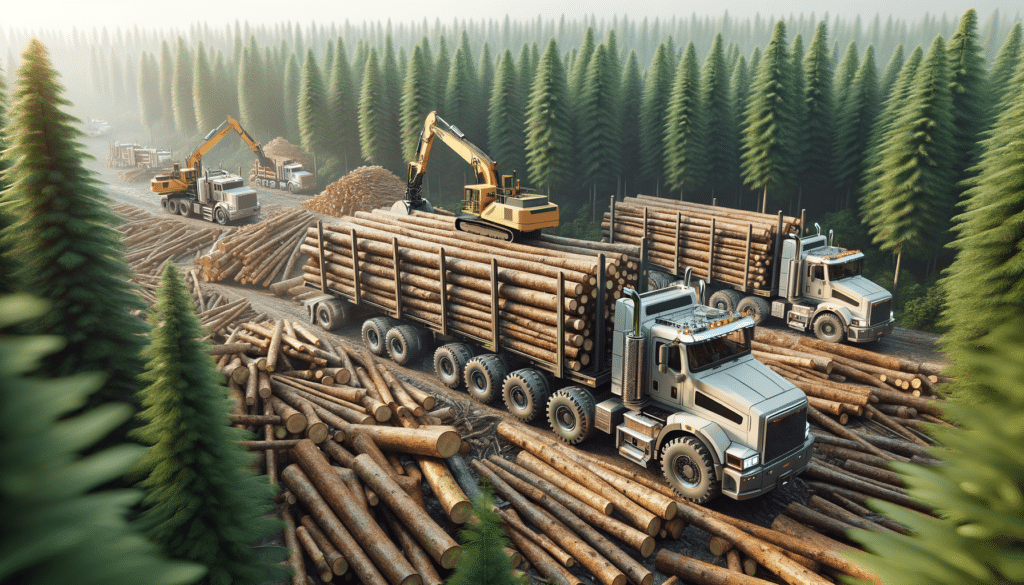Understanding Forestry Trucks: An Overview
Forestry trucks are indispensable in the logging industry, designed specifically to handle the demanding tasks of transporting timber. These trucks are not only about moving logs from one place to another; they are engineered to navigate challenging terrains and ensure the safe and efficient delivery of timber. The versatility of forestry trucks allows them to perform in various environments, from dense forests to rugged mountain roads.
Forestry trucks come in different configurations, each tailored to specific tasks within the logging process. The choice of truck often depends on the type of terrain, the size of the timber, and the distance to be covered. They are equipped with specialized features such as reinforced frames, powerful engines, and advanced suspension systems to handle heavy loads and rough conditions. Understanding these configurations is crucial for anyone involved in the forestry and logging industries, as it can significantly impact operational efficiency and safety.
The Role of Log Loader Trucks
Log loader trucks play a pivotal role in the logging industry by facilitating the loading and unloading of timber. These trucks are equipped with hydraulic arms or cranes that can lift heavy logs with precision and ease. The ability to maneuver logs efficiently is essential, especially in environments where space is limited, and the terrain is uneven.
Log loader trucks are designed to handle a variety of log sizes and weights. They often come with rotating cabs and extendable booms, allowing operators to position logs accurately for transport. This flexibility not only enhances productivity but also improves safety by minimizing the need for manual handling of heavy logs. The efficiency of log loader trucks is further enhanced by their ability to operate in remote and challenging locations, ensuring that timber can be moved quickly from the forest to processing facilities.
Timber Hauling Equipment: Key Features and Considerations
Timber hauling equipment is critical in ensuring that logs are transported safely from the forest to the mill. The choice of equipment depends on several factors, including the type of terrain, the distance to be covered, and the size of the logs. Common types of timber hauling equipment include flatbed trailers, self-loading trucks, and all-terrain vehicles.
When selecting timber hauling equipment, it’s important to consider the load capacity and the durability of the vehicle. Equipment must be robust enough to handle the weight of the logs and withstand the rigors of off-road conditions. Additionally, features such as traction control and advanced braking systems are essential for maintaining safety on steep or slippery surfaces. Proper maintenance and regular inspections are also crucial to ensure the reliability and longevity of timber hauling equipment.
- Load capacity: Ensure the equipment can handle the weight of the timber.
- Durability: Choose vehicles built to withstand rough terrains.
- Safety features: Look for traction control and advanced braking systems.
Forestry Trucks and Environmental Considerations
In the context of environmental sustainability, forestry trucks are increasingly being designed with eco-friendly features. The logging industry is under pressure to reduce its carbon footprint and minimize environmental impact. As a result, manufacturers are focusing on developing trucks that are more fuel-efficient and produce fewer emissions.
Modern forestry trucks are equipped with engines that comply with stringent emission standards, and some models are even exploring hybrid or electric powertrains. These advancements not only help in reducing the environmental impact but also offer cost savings in terms of fuel consumption. Additionally, the use of advanced GPS and telematics systems in forestry trucks allows for optimized routing, reducing unnecessary fuel usage and minimizing the impact on forest ecosystems.
Conclusion: Choosing the Right Forestry Truck for the Job
Choosing the right forestry truck is crucial for the success of logging operations. The decision should be based on a thorough understanding of the specific needs of the job, including the type of terrain, the size and weight of the timber, and the distance to be covered. By selecting the appropriate truck configuration, logging companies can enhance efficiency, improve safety, and reduce environmental impact.
As the industry continues to evolve, staying informed about the latest advancements in forestry truck technology is essential. This knowledge enables companies to make informed decisions that align with both operational goals and environmental responsibilities. Ultimately, the right forestry truck not only supports the demands of the job but also contributes to a more sustainable and efficient logging industry.


